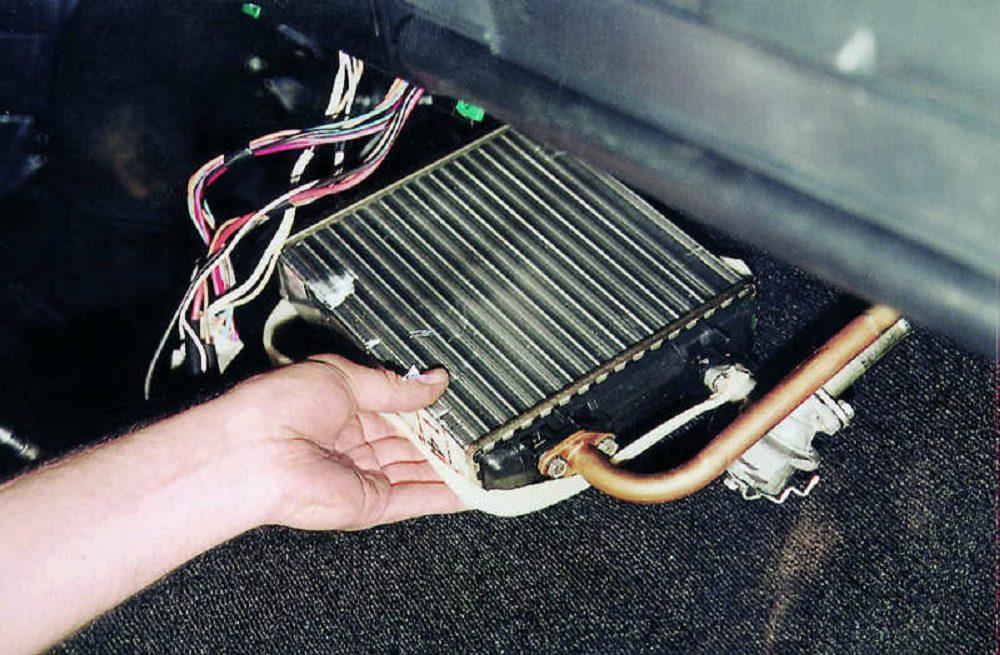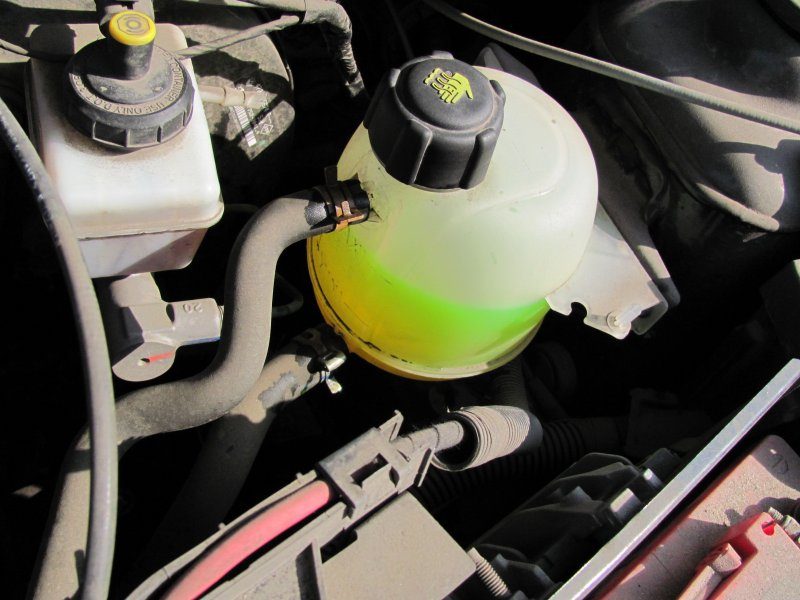
The stove is leaking in the car - the main reasons for what to do
Content
A stove (heater, interior heater) is leaking in the car - most motorists have encountered this situation at least once, and the probability of its occurrence is directly proportional to the age and technical condition of the car. Since the stove is part of the engine cooling system, a leak in it poses a threat to the engine, but not every car owner knows what to do in this case.
A stove (heater, interior heater) is leaking in the car - most motorists have encountered this situation at least once, and the probability of its occurrence is directly proportional to the age and technical condition of the car. Since the stove is part of the engine cooling system, a leak in it poses a threat to the engine, but not every car owner knows what to do in this case.
How to determine that the stove is leaking
The main symptom of this malfunction is the smell of antifreeze in the cabin, which intensifies during engine warm-up and operation at high speeds. In these modes, the intensity of movement of the coolant in a small circle increases (read more about this here), due to which the pressure inside the pipes and the radiator (heat exchanger) of the heater increases, which leads to increased leakage. In addition, heated antifreeze releases volatile substances more strongly, which also enhances the smell in the cabin.
At the same time, the level of coolant in the expansion tank always decreases, even if only slightly. Sometimes the appearance of an unpleasant odor is associated with pouring low-quality liquid into the washer reservoir, the manufacturers of which saved on perfume and flavors, so they could not kill the “aroma” of isopropyl alcohol. Therefore, the combination of an unpleasant smell in the cabin, which increases with increasing engine speed and is not associated with the operation of the windshield washers, as well as a decrease in the level of antifreeze in the expansion tank, are signs that the coolant (coolant) is leaking in the heater.

Stove leaking: antifreeze level
Causes
Here are the main reasons for this malfunction:
- radiator leak;
- damage to one of the hoses;
- weak tightening of clamps.
The heater heat exchanger is a complex device consisting of many tubes connected by soldering or welding. All materials must withstand the pressure and exposure to hot coolant, but sometimes the system leaks, especially if cheap non-genuine parts are installed. The most reliable are simple radiators, in which one tube is laid in a “snake”, so there is no soldering or other types of connections. However, these heat exchangers are not very efficient. More complex devices consist of two collectors connected by dozens of tubes, their efficiency is much higher, but due to the abundance of connections, it is they who cause the stove to flow in the car.
The hoses are made of rubber, so over time they become tanned and cracked. When the crack passes through the entire thickness of the wall, fluid leakage occurs. Silicone and polyurethane pipes are noticeably less susceptible to this drawback, however, they also crack after a few years or decades, causing coolant leakage.

Heating hoses
Clamps are made of plastic or metal, but heating the elements of the cooling system leads to an increase in the diameter of the pipes and tubes. Poor-quality clamps stretch after a few years, which reduces the compression of the rubber hose, so a leak appears.
How to identify a leaking part
Since there are several possible places for a coolant leak, for a complete diagnosis, you will need to completely disassemble the car’s heating system and remove its elements from the car to the outside. If you do not do this and determine the place of leakage by touch, running your fingers along the radiator and hoses, then there is a high risk of detecting only a part of the problems, because in some places the coolant can only come out after the engine warms up and its speed increases. If you have just such a defect, then after reducing the speed, the leak will stop, and the high surface temperature (90 ± 5 degrees) will quickly dry the antifreeze outside.
How to fix a leak
When a coolant leak occurs through any of the heater elements, inexperienced owners of modern cars do not know what to do and why, they look for answers on the Internet and from friends, but the only correct solution is to replace the damaged part. Remember: you can try to solder or weld the heat exchanger, but it will last for a long time, and the clamps and hoses cannot be repaired at all, the first ones are tightened, and the second ones are changed. An attempt to seal a damaged pipe will only exacerbate the problem, due to which a critical drop in the coolant level and overheating of the motor is possible.
Conclusion
If a stove is leaking in a car, then such a car needs urgent repair, because in addition to an unpleasant smell in the cabin, this malfunction poses a serious threat to the motor. With a strong drop in the coolant level, the power unit may overheat, after which the engine will require expensive repairs. To eliminate the leak, it is enough to replace the damaged part.
